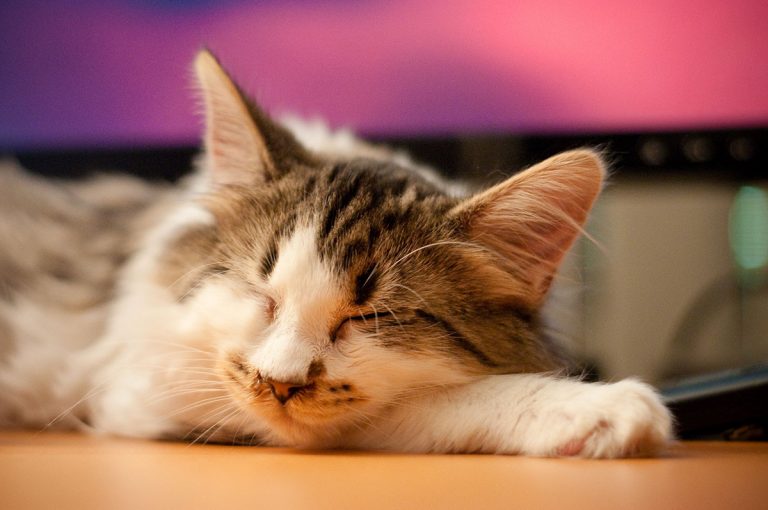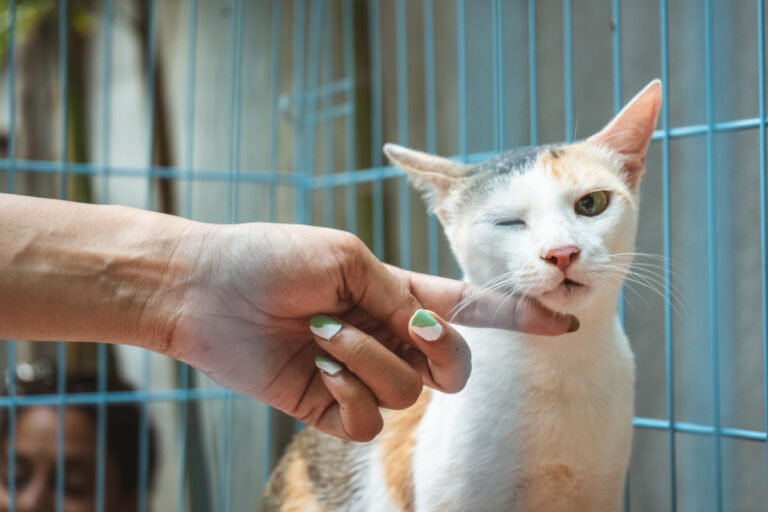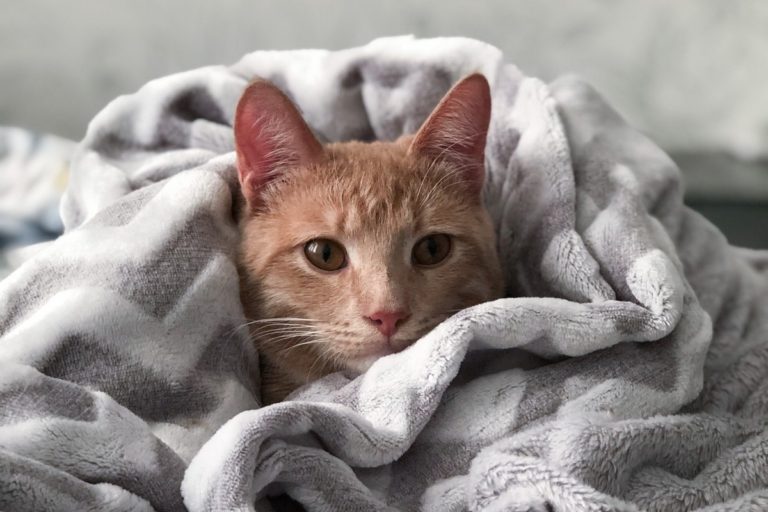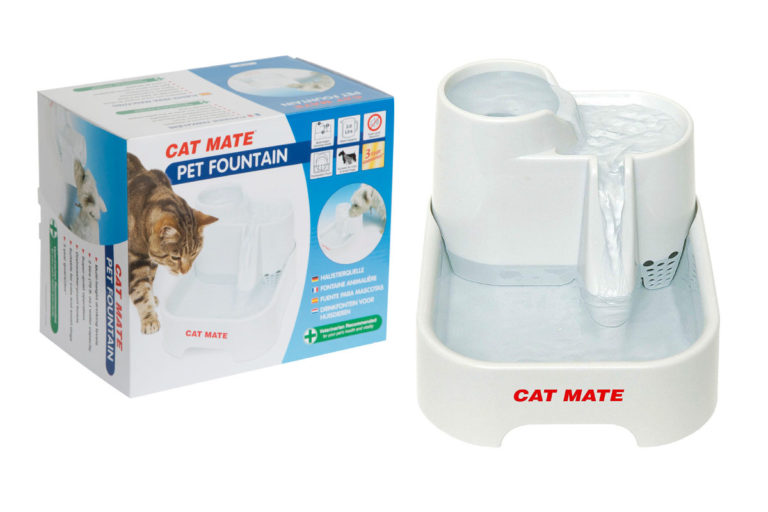Trying to figure out how many litter boxes you need for 5 cats? Use our handy formula and see if there are any exceptions for your specific household.
DISCLAIMER: This post may contain affiliate links. If you click one of these links and decide to make a purchase, we may receive a small commission. This comes at no extra cost to you and helps to keep the site alive and up to date. If you want more information, please review our Privacy Policy. Thank you for your support!
How Many Litter Boxes For 5 Cats?
Assuming for one second that you are living in a normal sized house with a normal amount of floors, you need 6 litter boxes to accommodate your 5 cats. Read on to find out why and what the exceptions to this rule are.
The Perfect Litter Box To Cat Ratio
It can be a struggle for guardians with multi-cat households to determine exactly how many litter boxes to put out for their felines. Luckily, there is a handy formula that can tell you the answer.
Just take the number of cats you have, and add 1. It’s as simple as that.
As with any rule, there are a few exceptions to this, though they are minor.
Large Houses
If you live in an exceptionally large house with more floors than cats, you should put at least one litter box on each floor your kitties have access to. Is your house big in terms of surface size too? Put two litter boxes on opposite ends of each floor.
Small Apartments
Another exception, and a more likely scenario, is when your house is very small. If you live in a condo or a studio apartment, it’s going to be difficult to fit 6 litter boxes in there and still live there comfortably as a human being. Just add as many as you can and spread them out a bit.
Litter Box Problems In Multi-Cat Households
As much as we would like our furry felines to be neat litter box users and blissfully cuddle up with each other afterwards, that’s usually not what ends up happening in Catland. Specific problems arise in multi-cat homes, or get exponentially worse the more cats you have.
Let’s go over the most common litter box problems for owners of multiple cats.
Fighting
When you introduce a new cat personality into your family, the existing feline population isn’t always that welcoming to the newcomer. Clashes may happen where one cat chases another cat out of the room and, for instance, under the bed.
This territorial behavior can also occur around the litter box.
If you have one cat that is more dominant than the rest, or one that is especially insecure about its territory, you might see them guarding the litter box area. Other cats are chased away, often with a lot of aggression, and might become too afraid to use the litter box.
Which leads us to the next issue…
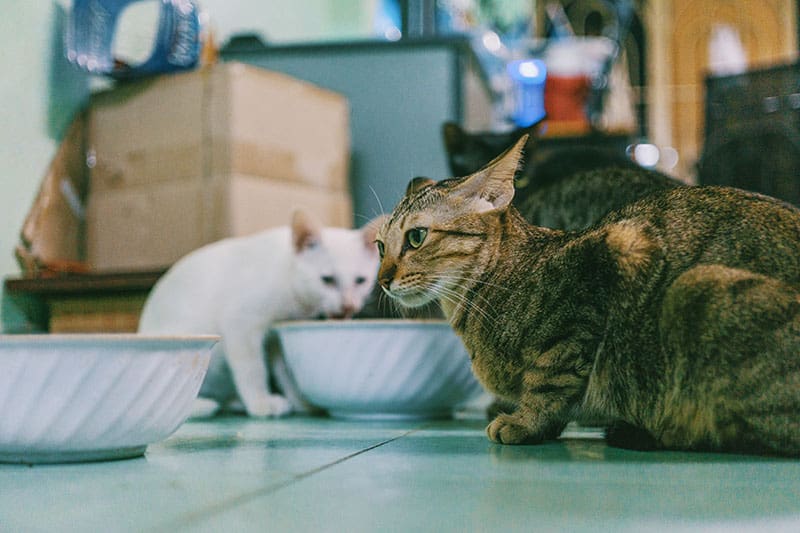
Accidents
One ground rule of living with cats is that accidents happen. Plants get knocked over, vases break, and poop lands next to the litter box. And with 5 cats, chances of this happening are even bigger!
There is one very important thing to realise in situations like this: your cat is not doing it on purpose. Cats are instinctual beings. They don’t plan or scheme; they react.
So getting mad and screaming at your kitty when she poops on the floor or knocks over a precious heirloom is not going to help. It will only make her scared of you, and that’s not what you want.
Luckily, there is a whole commercial pet product machine at work every day to make our lives as cat owners easier. And they have come up with plenty of ways to limit the problems of bathroom accidents.
Cat litter mats are great for catching spills in your litter box area. And most of them (try to) prevent litter tracking as well. Bonus!
Litter boxes, nowadays, come in all shapes and sizes. There are big ones and small ones. Some have high rims to guard your walls against spraying. Others are covered, with an opening either in the front or at the top. There’s nothing stopping you from finding a litter box specifically suited to your accident-prone kitties.
Odor Control
Another important aspect about managing the litter boxes of 5 cats is the amount of stank they produce. Cleaning up after one cat is easy to do, but when you have 5 kitties you need to start thinking beyond regular manual scooping to keep up with them.
If you don’t like scooping at all, there is the option of using disposable bin liners in your litter box. Just place the liner in the litter pan and add the litter on top. The advantage of using these liners is that you don’t need to use as much litter as you do when you scoop. Every few days you can fold the bag closed and toss it in the garbage. Your litter box and your hands will stay pristine clean.
A more advanced, and more expensive, option is to get a self-cleaning litter box. A self-cleaning litter box auto-magically removes any feces and soiled litter without you touching it. Sounds fancy, right?
In most cases you do need to step in to empty it about once a week. However, there are also models that claim to need no emptying in weeks! I wouldn’t count on that holding up with 5 cats, though.
What Kind Of Litter Box Should I Get?
Given the problems that can occur in a house with multiple cats, what are the best types of litter boxes you can get? We will go over the basics with you.
Covered Versus Uncovered Litter Boxes
The most distinguishing feature of a litter box is whether or not it is covered. A litter box with a hood will keep your cats’ deposits out of your sight and greatly reduce the odor that rises up from the pan. The downside is that it gets trapped there for your cat to enjoy.
Top-entry litter boxes are a type of covered litter box with its opening at the top. Although this type of litter box is perfect for cats that like to spray, it is not recommended for households with a lot of tension between its felines. It could have disastrous consequences if a cat gets cornered inside and is attacked by one of her siblings.
The same goes for regular, front-entry litter boxes with a hood. If you still want to add some covered litter boxes in the mix to reduce odor, try to find one that is open on both sides, or one that has a see-through hood.
If you were considering a covered litter box for a spraying cat in your rumbling cat family, read on. There are other solutions you can try.
Litter Box Size
The size of your litter box is also important. Not just the surface size, but also the height.
In general, you want the inside of the litter box (including the hood, if you are using one) to be around 1.5 times the size of your cat. She should be able to walk in there, stand up without slouching and have enough room left over to turn around.
Now, to also make the litter box work for you, it should be big enough to catch all of your cat’s excrements and urine. Including what he or she might launch at the wall. A litter box with a high back or an all around high edge will catch spray and litter, so your walls and floors will stay clean.
At the same time, you don’t want the edge to be so high that your cat can’t comfortably enter the litter box. Kittens can’t jump yet and old cats with joint inflammation can’t jump anymore. Give them their own litter box with a low front entry. That way they don’t need to lift a paw to get in.
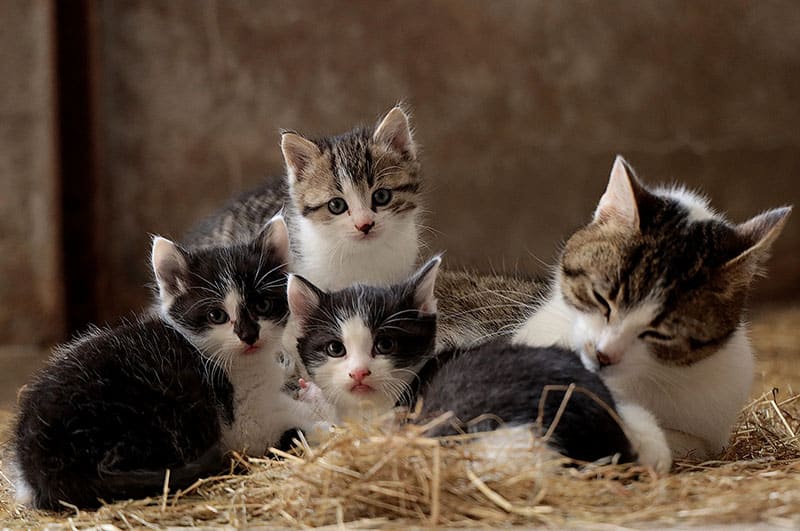
Sifting Versus Self-Cleaning Litter Boxes
As said, 5 cats and their litter boxes require a lot of upkeep. Make your own life easier by switching out one or two litter boxes with a sifting, or even a self-cleaning litter box.
Sifting litter boxes usually have a double layered pan. The top layer has holes in it that allow pee and soiled litter to drop through to the second layer. All you need to do is scoop up the feces, shake the litter box and toss out whatever’s in the bottom pan.
Sifting litter boxes are very good at limiting foul smells, because they trap the soiled bits underneath the clean pellets. You can also use special absorbent pads in your bottom litter pan to further help reduce the odor.
And the sooner you get that poop out of there, the less time that has to stink up the place too! So be sure to regularly check all your litter boxes, and give them each a good scrub once a week. Your cats will really appreciate it!
Where Should I Put My Litter Boxes?
You might be tempted to put all of your litter boxes in the same room, so that you only have to deal with the smell in that one room. However, it’s better for your cats, and your health, to spread them around your house more. Cat pee is highly toxic, so you don’t want a large amount of it concentrated in one area.
Moreover, within your house each of your 5 cats has its own territory. And the litter box is a large part of that.
You want to allow each of your cats the chance to claim one of the litter boxes as theirs. If they are all in the territory of the same cat, the others might not be comfortable using them. That way, you will end up with turds on the carpet, no matter how many litter boxes you put out.
Either way, it’s always a good idea to pair each litter box with a cat litter mat. This will prevent litter tracking through your house and can catch any accidents, if they do happen.
Final Thoughts
Taking care of 5 cats is a handful, but can be made so much easier if you have got their litter box situation under control. Get 6 litter boxes, or as many as you can fit into your small living space, and spread them across all cat territories. Pick litter boxes that cater to your cats’ specific needs to ensure that they will actually use them, and you don’t have to clean up as much.




